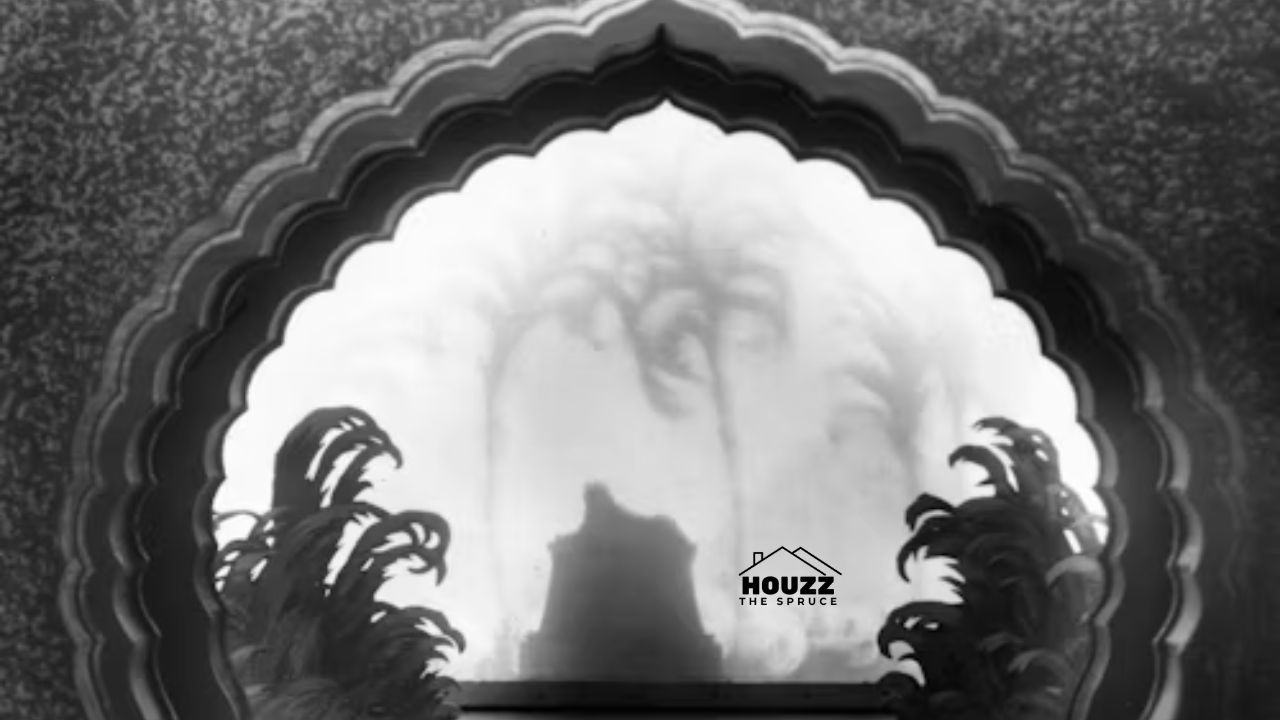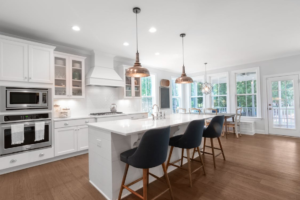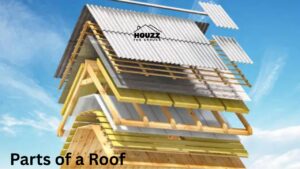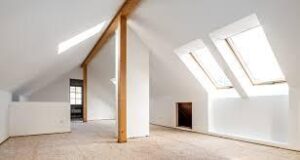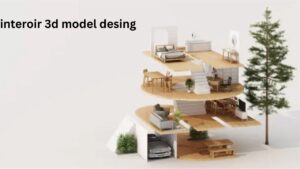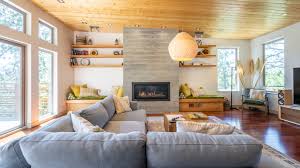Have you ever walked into a building and felt an immediate sense of awe? The way light filters through a window, the flow from one room to another, the materials under your fingertips—it’s all part of a carefully crafted experience. This is the heart of design arch design, a discipline that masterfully blends art with science to shape the world around us. It’s about more than just buildings; it’s about creating spaces that evoke emotion, serve a purpose, and stand the test of time.
This comprehensive guide will explore the fascinating world of architectural design. We will peel back the layers of what makes a structure truly remarkable, from the initial spark of an idea to the final, breathtaking reality. We’ll look at the principles that have guided architects for centuries and see how modern technology is pushing the boundaries of what’s possible in design arch design.
What Exactly Is Design Arch Design?
At its core, design arch design is the art and process of planning, designing, and constructing buildings and other physical structures. It’s a creative endeavor that requires a deep understanding of aesthetics, engineering, and human behavior. It is not simply about making a building look good, but about ensuring it functions beautifully for the people who use it.
An architect is like a conductor of a grand orchestra. They must harmonize countless elements—materials, light, space, texture, and context—to create a cohesive and impactful final piece. This process involves a delicate balance between artistic vision and practical constraints like budget, building codes, and client needs.
The Architect’s Dual Role: Artist and Engineer
One of the most compelling aspects of design arch design is its dual nature. Architects must be visionary artists, capable of imagining spaces that don’t yet exist. They sketch, they model, and they dream in three dimensions. Their creativity gives a building its soul and its unique character.
Simultaneously, they must be pragmatic engineers. A building must be safe, stable, and sustainable. This requires a rigorous understanding of physics, materials science, and construction methods. The most celebrated works of design arch design are those where the art and engineering are so seamlessly integrated that you can’t tell where one ends and the other begins.
Key Elements of Architectural Design
To truly appreciate design arch design, it’s helpful to understand its fundamental components. These are the building blocks that architects use to compose their masterpieces.
| Element | Description | Why It’s Important |
|---|---|---|
| Space | The three-dimensional area that is defined and shaped by architectural elements like walls, floors, and ceilings. | Space dictates how we move through and experience a building. It can feel open and freeing or intimate and secure. |
| Form & Mass | The overall shape and visual weight of a building or its parts. This includes its silhouette and perceived density. | Form creates the first impression. It can be simple and geometric or complex and sculptural, defining the building’s character. |
| Light | The use of natural and artificial light to illuminate spaces and highlight architectural features. | Light dramatically affects mood and perception. It can make a space feel vibrant, serene, or mysterious. |
| Material | The physical substances used in construction, such as wood, steel, glass, concrete, and stone. | Materials contribute to the building’s texture, color, and structural integrity. They also evoke sensory responses. |
| Rhythm | The repetition of elements like windows, columns, or patterns to create a sense of movement and visual order. | Rhythm guides the eye and can make a large structure feel cohesive and understandable. |
| Scale | The relationship between the size of the building and the human body, or its relationship to its surroundings. | Scale influences how a building feels. A monumental scale can inspire awe, while a human scale can feel welcoming. |
The Evolution of Design Arch Design: From Ancient to Modern
The practice of design arch design is as old as civilization itself. From the moment early humans sought shelter, they began to manipulate their environment. This long history has produced a stunning array of architectural styles, each reflecting the technology, culture, and values of its time.
Ancient Wonders and Classical Orders
Think of the Great Pyramids of Giza. Their monumental scale and precise geometric form were incredible feats of ancient engineering and design arch design. They were built not just as tombs, but as powerful symbols of eternity and divine power.
Later, the Greeks and Romans developed the Classical Orders (Doric, Ionic, and Corinthian). These weren’t just decorative styles; they were complete systems of proportion and detail that brought harmony and logic to buildings like the Parthenon. This focus on mathematical proportion became a cornerstone of Western design arch design for centuries.
The Soaring Ambitions of Gothic Cathedrals
The Gothic era brought breathtaking innovation. Architects developed pointed arches, ribbed vaults, and flying buttresses, which allowed them to build taller, lighter structures with vast stained-glass windows. Cathedrals like Notre-Dame in Paris weren’t just places of worship; they were divine spaces designed to flood the interior with heavenly light, a truly emotional use of design arch design.
The intricate craftsmanship and structural daring of these buildings continue to inspire architects and engineers today. They represent a period of profound spiritual and technical ambition.
Modernism: A Revolution in Form and Function
The 20th century sparked a revolution. The Modernist movement rejected historical ornamentation in favor of simplicity, clean lines, and honesty of materials. Pioneers like Le Corbusier, Ludwig Mies van der Rohe, and Walter Gropius championed the idea of “form follows function.”
This new philosophy gave us iconic steel-and-glass skyscrapers, minimalist homes with open floor plans, and a fresh approach to design arch design that prioritized efficiency and a connection to the machine age. The Seagram Building in New York, designed by Mies van der Rohe, is a perfect example of this elegant, stripped-down aesthetic. It’s a testament to the idea that beauty can be found in structural clarity.
Contemporary Trends Shaping the Future
Today, the world of design arch design is more diverse and dynamic than ever. Architects are grappling with complex global challenges and harnessing powerful new tools, leading to some incredibly exciting trends.
Sustainable and Green Architecture
Perhaps the most significant trend is the shift towards sustainability. With growing awareness of climate change, architects are pioneering new ways to create environmentally responsible buildings. This is more than just adding solar panels; it’s a holistic approach to design arch design.
Key Features of Green Buildings:
- Passive Design: Orienting a building to take advantage of natural light and ventilation, reducing the need for artificial heating, cooling, and lighting.
- Sustainable Materials: Using recycled, renewable, or locally sourced materials to minimize the building’s carbon footprint. Bamboo, reclaimed wood, and recycled steel are popular choices.
- Energy Efficiency: Incorporating high-performance insulation, energy-efficient windows, and smart systems to drastically reduce energy consumption.
- Water Conservation: Implementing systems for rainwater harvesting, greywater recycling, and low-flow fixtures.
- Biophilic Design: Integrating nature into the building through green roofs, living walls, and interior gardens to improve well-being and connect occupants to the natural world.
A fantastic example is the Bosco Verticale (“Vertical Forest”) in Milan, Italy. These residential towers are covered in over 900 trees and 20,000 plants, which help filter air pollution, moderate temperatures, and create a stunning urban ecosystem. This is design arch design as a solution for healthier cities.
The Rise of Parametric and Computational Design
Technology is unlocking new creative possibilities. Parametric design uses algorithms to generate complex geometric forms that would be nearly impossible to design by hand. Architects can set parameters (like material constraints, structural loads, or desired light levels), and the computer can generate thousands of design iterations.
What Parametric Design Enables:
- Complex Geometries: Creating the fluid, curvilinear forms seen in the work of architects like Zaha Hadid. Her Heydar Aliyev Center in Azerbaijan seems to flow organically from the landscape, a shape made possible by advanced computational tools.
- Optimization: Finding the most efficient structural or material solution for a given problem. This can lead to lighter, stronger, and more cost-effective buildings.
- Customization: Easily adapting a design to different sites or requirements without starting from scratch.
This approach to design arch design is not about letting computers take over. It’s about augmenting the architect’s creativity, allowing them to explore possibilities at a scale and complexity never before seen.
Adaptive Reuse: Giving Old Buildings New Life
Not all great design arch design is about building from the ground up. Adaptive reuse is the process of repurposing old buildings for new functions. This is a wonderfully sustainable practice that preserves history, conserves resources, and creates unique, character-filled spaces.
An old factory might become a vibrant apartment complex, a decommissioned church could be transformed into a stunning library, or a derelict warehouse might find new life as a bustling food market. London’s Tate Modern, a world-famous art gallery housed in a former power station, is a triumphant example. The architects celebrated the building’s industrial past while creating a world-class cultural institution.
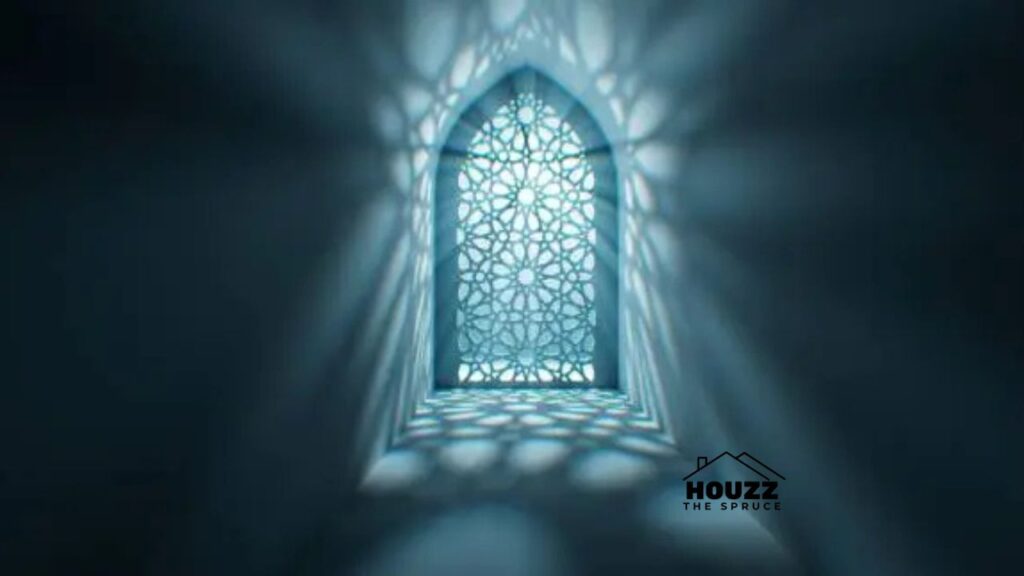
Spotlight on a Master: The Legacy of Zaha Hadid
No discussion of modern design arch design would be complete without mentioning the late Dame Zaha Hadid. A true visionary, she shattered conventions and forever changed the architectural landscape. Her work is characterized by powerful, sweeping forms that feel both futuristic and deeply organic.
Personal Background and Impact
Born in Baghdad, Iraq, in 1950, Zaha Hadid moved to London in the 1970s to study at the Architectural Association School of Architecture. For years, her radical, deconstructed designs were considered unbuildable, earning her the title of a “paper architect.” Her paintings of proposed buildings were works of art in themselves, full of dynamic energy.
Her breakthrough came with the Vitra Fire Station in Germany (1993). This building, with its sharp, angular concrete planes, felt like a frozen explosion of energy. It announced the arrival of a major new talent. From there, her firm went on to design some of the most iconic structures of the 21st century, from the London Aquatics Centre for the 2012 Olympics to the Guangzhou Opera House in China.
What Made Her Approach to Design Arch Design So Special?
Hadid’s genius lay in her ability to create a sense of fluidity and movement in solid materials. Her buildings rarely feature traditional right angles. Instead, they curve, fold, and soar, creating a seamless spatial experience. She embraced parametric design early on, using technology to realize her complex visions.
Her legacy is not just in her buildings but in her fearless spirit. As a woman and an Iraqi-born architect in a male-dominated field, she broke down countless barriers. She proved that design arch design could be daring, expressive, and emotionally resonant.
User Perspectives: What It’s Like to Experience Great Architecture
Ultimately, the success of any design arch design is measured by the people who inhabit it. A building can be theoretically brilliant, but if it doesn’t work for its users, it has failed.
A Student at the Rolex Learning Center (Lausanne, Switzerland)
The Rolex Learning Center, designed by SANAA, is a radical take on a university library. It’s one vast, open space with undulating floors and ceilings that create “hills” and “valleys” instead of separate rooms.
User Review: “Studying here is an incredible experience. You can find a quiet, cozy spot in one of the ‘valleys’ or work collaboratively on one of the open ‘plateaus.’ The constant gentle slopes mean you’re always aware of the people around you, but it never feels crowded. It fosters a sense of community you don’t get in a traditional library. The way the light comes in from the circular courtyards is just beautiful. It’s inspiring. Rating: 4.8/5“
This feedback highlights how innovative design arch design can directly influence social interaction and learning.
An Office Worker at The Edge (Amsterdam, Netherlands)
Often called the “greenest, smartest building in the world,” The Edge, designed by PLP Architecture, is a masterpiece of sustainable design arch design. It generates more energy than it consumes and uses a smart app to control lighting, temperature, and even desk assignments for its employees.
User Review: “Working here has completely changed my perception of an office. The app knows my preferences for light and temperature, and it adjusts my workspace automatically. The huge atrium is filled with natural light and plants, so it never feels like a stuffy office. You feel healthier just being here. It’s proof that a workplace can be both hyper-efficient and incredibly pleasant. Rating: 4.9/5“
This shows how technology and sustainability can combine to create a superior user experience, which is a key goal of modern design arch design.
The Process of Design Arch Design: From Idea to Reality
The journey from a client’s wish list to a finished building is a long and complex one. It typically unfolds in several distinct phases, each requiring different skills and decisions.
Phase 1: Pre-Design (The Dream)
This is the very beginning. The architect and client work together to define the project’s goals, requirements, and budget. What is the purpose of the building? Who will use it? What feeling should it evoke? This phase is about asking big questions and establishing a clear vision. The success of the entire design arch design project hinges on this initial alignment.
Phase 2: Schematic Design (The Sketch)
Here, the architect begins to translate the ideas from the pre-design phase into rough drawings and models. They explore broad concepts for the building’s form, layout, and scale. This is a highly creative phase where the main architectural concept takes shape. Multiple options are often presented to the client to find the best path forward. This stage sets the foundation for the entire design arch design.
Phase 3: Design Development (The Blueprint)
Once a schematic design is approved, the team begins to flesh it out. They select specific materials, define the structural system, and plan out the mechanical, electrical, and plumbing systems. The drawings become more detailed, and the project’s costs become clearer. This phase is about refining the design and solving technical challenges.
Phase 4: Construction Documents (The Instructions)
This is the most technical and intensive phase. The architectural team produces a comprehensive set of highly detailed drawings and specifications. These documents are the instruction manual for the contractor, telling them exactly how to build the project. They must be incredibly precise to ensure the final building matches the architect’s vision for the design arch design.
Phase 5: Bidding and Negotiation (The Team)
The construction documents are sent out to general contractors, who submit bids to build the project. The architect often helps the client evaluate these bids and select the right contractor for the job.
Phase 6: Construction Administration (The Build)
During construction, the architect acts as the client’s representative. They regularly visit the site to answer questions, resolve issues, and ensure the work is being done according to the plans. They are the guardians of the design integrity, making sure the final product lives up to the promise of the initial design arch design concept.
Frequently Asked Questions (FAQs)
Q1: How do I become an architect?
Becoming a licensed architect is a rigorous process. It typically requires a professional degree in architecture (either a Bachelor or Master of Architecture), a multi-year internship under a licensed architect to gain practical experience, and passing a comprehensive licensing exam. It’s a path that demands both creative talent and technical dedication.
Q2: What’s the difference between an architect and an architectural designer?
A licensed architect has completed the educational, internship, and exam requirements to legally practice architecture and call themselves an architect. An architectural designer may have similar design skills and education but is not licensed. They can design buildings but often must have their plans approved and stamped by a licensed architect, especially for larger or public projects. The core principles of design arch design are important for both roles.
Q3: How much does it cost to hire an architect?
Architectural fees vary widely depending on the project’s complexity, location, and the architect’s experience. Fees can be structured as a percentage of the total construction cost (often 8-15%), a fixed fee, or an hourly rate. While it’s a significant investment, a good architect can save you money in the long run through efficient design and by avoiding costly mistakes.
Q4: Can good design arch design increase a property’s value?
Absolutely. A well-designed building is more functional, more beautiful, and more desirable. Features like good natural light, an efficient floor plan, and high-quality materials can significantly increase a property’s market value. Thoughtful design arch design is an investment that pays dividends.
Q5: Is sustainable design more expensive?
There can sometimes be higher upfront costs for sustainable features like high-performance windows or solar panels. However, these are often offset by long-term savings on utility bills. Furthermore, as green technologies become more common, their costs are decreasing. Many sustainable strategies, like passive design, add little to no cost and offer huge benefits. A good design arch design professional will know how to balance cost and sustainability.
The Enduring Power of Great Design
The world of design arch design is a testament to human ingenuity. It’s a field that constantly looks to the future while respecting the lessons of the past. From the timeless proportions of ancient temples to the smart, sustainable skyscrapers of tomorrow, architecture is the story of who we are and who we aspire to be, written in glass, steel, and stone.
Great architecture does more than provide shelter. It can inspire us, comfort us, challenge our perceptions, and bring us together. It shapes our daily lives in ways we may not even notice, influencing our mood, our productivity, and our sense of community. The next time you walk into a space that makes you feel something—whether it’s the grand hall of a museum or the cozy corner of a café—take a moment to appreciate the incredible thought, creativity, and skill behind it. That feeling is the magic of exceptional design arch design.
Admin Recommendation
Blue Kitchen Cabinets: Stylish Ideas, Colors & Designs for Every Home
10 Amazing Benefits of a Bedroom Accent Wall for Style & Comfort

